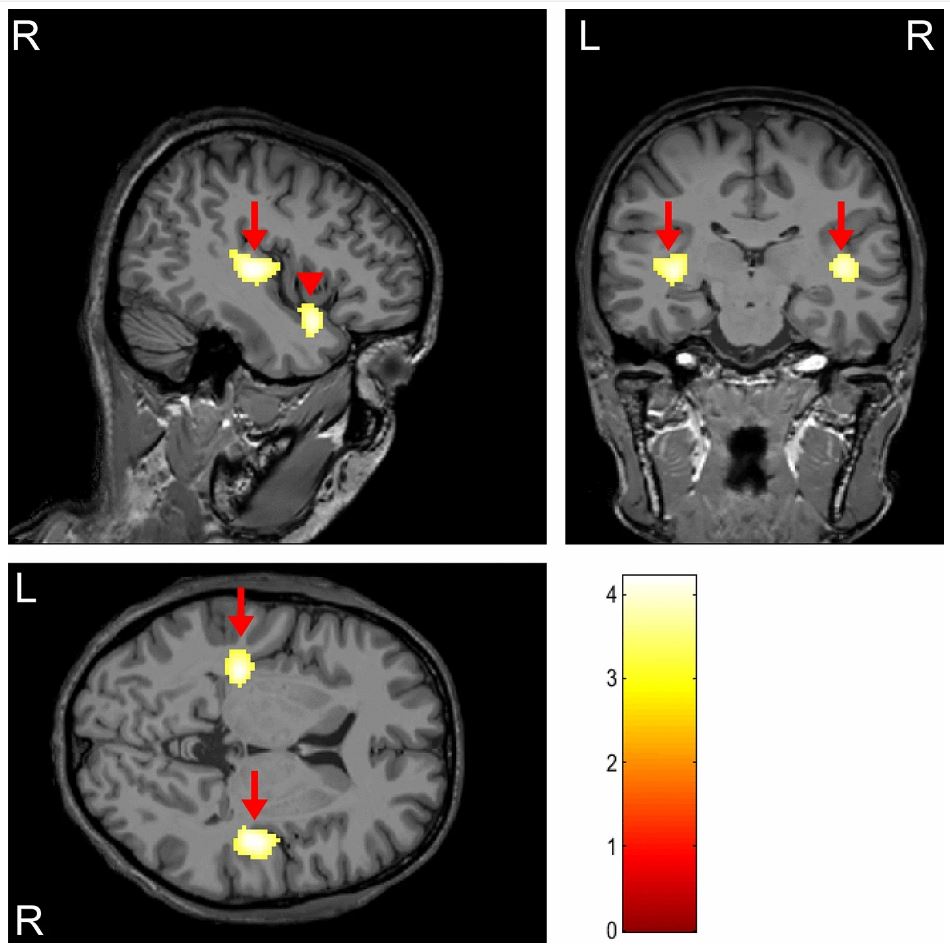A new study published in Scientific Reports has found important differences in brain activity and connectivity between people with noise-induced hearing loss (NIHL) and those with normal hearing.
NIHL is a common type of sensorineural hearing loss caused by repeated exposure to loud noises over time.
Evaluating Brain Activity
The study enrolled 89 men diagnosed with or at high risk for NIHL, along with 89 men with normal hearing as a control group. All subjects underwent advanced brain imaging scans called fluorodeoxyglucose (FDG) positron emission tomography/computed tomography (PET/CT). This scan can detect subtle changes in brain cell activity and connections by mapping cerebral glucose metabolism patterns.
Compared to the control group, subjects with NIHL showed decreased brain activity in areas related to processing sounds and language, including the insula regions and right superior temporal gyrus. The insula plays diverse roles in hearing, speech, emotion, and cognition. The right superior temporal gyrus specializes in auditory and language integration.

Brain areas showing hypometabolism in noise-induced hearing loss subjects (arrow: insula; arrow head: right superior temporal gyrus). Image credit: Seunghyeon Shin & Hyun-Yeol Nam, Nature Scientific Reports
In addition to changes in specific brain regions, subjects with NIHL displayed an overall disruption of metabolic connectivity – the coordinated activity between different areas of the brain. They had decreased strength and efficiency of both local and global brain networks compared to those with normal hearing.
The researchers conclude that the decreased brain activity and connectivity relate to impaired auditory function seen in NIHL. These changes also resemble those found in other sensorineural hearing loss, suggesting shared underlying mechanisms.
“To our knowledge, this is the first study using FDG-PET imaging focused specifically on NIHL. The decreased connectivity in speech and language regions could help explain why those with NIHL struggle with communication, even when wearing hearing aids.”
Further research is necessary to establish whether these brain changes can be reversed with early treatment of hearing loss by avoiding exposure to loud noises. Additionally, the study lacked cognitive testing results or MRI scans for comparison among the subjects.
Nevertheless, this discovery adds a significant new aspect to our comprehension of noise-induced hearing loss (NIHL) beyond traditional hearing tests. The findings underscore that NIHL isn’t solely confined to inner ear damage; it’s also connected to more profound neurological impacts.
Shedding light on these subtle brain changes, the research intensifies the urgency for individuals and employers to prioritize hearing protection to prevent irreversible hearing decline.
Reference:
- Shin, S., Nam, HY. Characteristics of brain glucose metabolism and metabolic connectivity in noise-induced hearing loss. Sci Rep 13, 21889 (2023). https://doi.org/10.1038/s41598-023-48911-x
Source: Nature Scientific Reports






